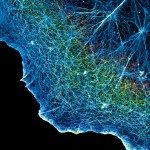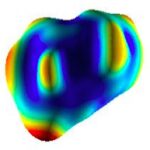Link to Pubmed [PMID] – 16190474
IEEE Trans Image Process 2005 Sep;14(9):1396-410
Cell migrations and deformations play essential roles in biological processes, such as parasite invasion, immune response, embryonic development, and cancer. We describe a fully automatic segmentation and tracking method designed to enable quantitative analyses of cellular shape and motion from dynamic three-dimensional microscopy data. The method uses multiple active surfaces with or without edges, coupled by a penalty for overlaps, and a volume conservation constraint that improves outlining of cell/cell boundaries. Its main advantages are robustness to low signal-to-noise ratios and the ability to handle multiple cells that may touch, divide, enter, or leave the observation volume. We give quantitative validation results based on synthetic images and show two examples of applications to real biological data.



